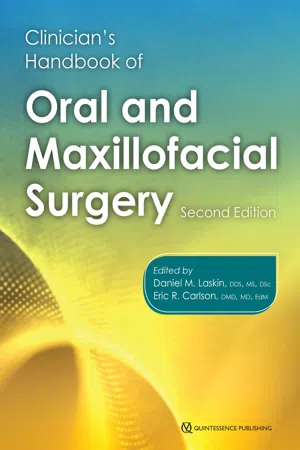![]()
The hospital is an institution that provides medical and surgical treatment and nursing care for sick or injured individuals. Hospitals have existed since the Middle Ages in Europe and the Middle East. Since that time, there has emerged a set of policies and procedures directed toward a safe and efficient environment that benefits the healing process of the individual while standardizing care. The protocol standards-setting and accrediting body in health care in the United States is the Joint Commission, an independent, not-for-profit organization that evaluates and accredits nearly 21,000 health care organizations and programs. The mission of the Joint Commission is to continuously improve the safety and quality of care provided to the public through the provision of health care accreditation and related services that support performance improvement in health care organizations. This chapter highlights contemporary hospital protocols and procedures generally found in modern hospitals in the United States.
Admission Note
Purpose
An admission note (Fig 1-1) is that part of a medical record that documents the patient’s status, reason for admission for inpatient care to the hospital or other facility, and the initial patient care instructions. Its purpose is to provide a concise and accurate assessment of requirements of the patient to other health care providers who will be attending to the patient. According to the Joint Commission, this must be completed and documented within 24 hours following admission of the patient, but prior to surgery or a procedure requiring anesthesia services (including moderate sedation).
Content
The components of an admission note include the following:
•Chief complaint (CC)
•History of present illness (HPI)
•Review of systems (ROS)
•Past medical history (PMH)
•Past surgical history (PSH)
•Allergies
•Medications
•Physical examination (PE)
•Assessment and plan
The CC generally consists of one to two sentences in a concise statement that describes the symptoms, problems, condition, diagnosis, or other factors that are the reason for the encounter, usually stated in the patient’s own words (eg, “My bite is off after I got punched.”). The HPI is a chronologic description of the development of the patient’s complaints that contains the patient’s age, race, gender, and a detailed presenting complaint. The ROS is an inventory of all the organ systems, with a focus on the subjective symptoms perceived by the patient, which seeks to identify signs and/or symptoms that the patient may be experiencing or has experienced. There are 14 systems recognized by the Centers for Medicare and Medicaid Services, as follows:
•General
•Head, eyes, ears, nose, and throat (HEENT) as well as sinuses, mouth, and neck
•Cardiovascular system
•Respiratory system
•Gastrointestinal system
•Urinary system
•Genital system
•Vascular system
•Musculoskeletal system
•Nervous system
•Psychiatric
•Hematologic/lymphatic system
•Endocrine system
•Allergic/immunologic system
Fig 1-1 Admission note example.
Admission Orders
Purpose
The purpose of the admission orders (Fig 1-2) is to establish a set of clear and concise instructions that will allow the nursing and auxiliary staff to manage the admitted patient according to the requests of the admitting doctor. These are completed prior to admission to the hospital through a standard set of instructions (ie, orders) that are to be carried out by the nursing staff to ensure optimal care for the admitted patient.
Content
The admission orders are usually represented by a mnemonic that reflects the functional types of orders, such as ADCVAANDIML (admit, diagnosis, condition, vital signs, activity, allergies, nursing, diet, IV fluids, medications, labs/procedures).
•Admitting doctor or service: Name of the doctor or service under which the patient is being admitted to the hospital (eg, admit to Dr X or Oral and Maxillofacial Surgery Service).
•Diagnosis: The admission diagnosis according to the information that is available at the time (eg, maxillofacial trauma).
•Condition of patient: Condition of the patient at the time of admission (eg, stable condition).
•Vital signs: The interval at which the requisite vital signs, such as heart rate and blood pressure, are to be taken and recorded by the nursing staff (eg, record vital signs every [q] shift).
•Activity: List the level of activity that you would like the patient to tolerate. Usually related to the type of injury, illness, or procedure that the patient has sustained or undergone (eg, as tolerated, out of bed to chair, encourage ambulation).
•Allergies: List any pertinent known allergies and, if available, the reaction that the patient has to that allergy (eg, penicillin w/ rash or no known drug allergies [NKDA]).
•Nursing care: List the specific orders that you require the nursing staff to perform, any consults requested, and when the admitting surgeon or service should be contacted in the care of the admitted patient (eg, nothing by mouth after midnight [NPO MN], void bladder on call to operating room [OR]).
•Diet: The type and route of nourishment of the admitted patient (eg, liquid PO diet).
•Intravenous (IV) fluids: The specific type and amount of IV fluid that the patient is to receive while in the hospital (eg, run dextrose 5% in half normal saline [D5 1/2 NS] with potassium chloride [KCl] 20 mEq/L at 125 mL/h after MN).
•Medications: Specific name, route, dosage and interval of both hospital med...


